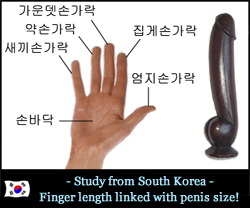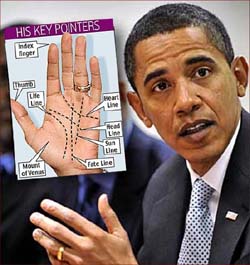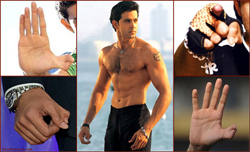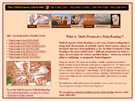HANDS – An impression from the Wellcome Collection ‘hands-event’!
December 3, 2010

An impression from the Wellcome Collection hands-event in London!
Hands….where would we be without them?
At november 26 the Wellcome Collection in Lond presented their ‘hands’-event. Tabitha Langton-Lockton was one of the participants in the event and she wrote an impressive review:
Can you imagine a society without hands? Frankly, no. For this would mean a world without Twitter, Facebook and YouTube; heavens forbid a world without art and literature, for how would we paint, write and type?
The Wellcome Collection plays host to an event, ‘Hands’, celebrating these odd looking appendages with an evening of music, magic and science. In the foyer visitors play the piano and pinball machine whilst waiting for the main event to open. Gigantic cardboard hands loom by the entrance and people animatedly express themselves with their hands as they queued for the ticketed events. Hands are everywhere.

A talk by Chris McManus takes place in the auditorium. Accompanied by a British Sign Language interpreter, McManus explains the science that differs between the left and right-handed. As a right-handed individual, I was disappointed to find out that all ‘lefties’ were not in fact evil as I had previously been led to believe. A later talk by the evolution expert Christophe Soligo explains how hands have developed and changed over time. Both talks are educational and thought-provoking.
The wonder of hands continues to be celebrated on all floors. Climbing the stairs, white-gloved men greet visitors with a shake of the hand and subtly (but unsuccessfully) try to place a sticker on their arms without them noticing.
On the first floor, areas dedicated to the event could be found whilst wandering around the current exhibitions. The Nail Bar proves popular with the ladies (although I did spy a suited man waiting patiently for his turn) whilst the prosthetics and medical tools appeal more to the gruesome individuals.
A neuroscientist asks me to place my right hand inside a black box and look at a rubber hand. He then proceeded to poke and stroke me resulting in my questioning my senses and walking away feeling distinctly confused. Had he been poking my hand or the rubbery hand?
Turning a corner I found what I was looking for – the palmistry section. After having my palms read by an amateur reader from the Collection library I plucked up the courage to ask if he could see children in my future. “I think that you might have two”. “Damn” I muttered, “I was hoping for at least three”.
The second floor becomes a surgery for the evening. Here, surgeons from Imperial College perform the art of stitching a wound, whilst showing the crowd how hands save lives. Visitors were able to try their hands at surgery and to see for themselves just how steady the hand must be to perform operations.
‘Hands’ shows the visitor just how essential they are in everyday life. The evening appealed to all ages and amused and educated its audience.
• Famous stories about strang hands: Charles Darwin
• The Wellcome Collection presents their HANDS-event (official announcement)
|
The new ‘bionic hand‘ was created by the Robotics and Mechanisms Laboratory of the College of Engineering at Virginia Tech, and was named: ‘RAPHaEL’ – Robotic Air Powered Hand with Elastic Ligaments. The students who designed the man-killing machinery will be splitting a $10,500 prize for winning first place in an innovative-design competition sponsored by the Cleveland-based Compressed Air and Gas Institute. The new ‘bionic’ robotic hand that can firmly hold objects as heavy as a can of food or as delicate as a raw egg, while dexterous enough to make hand gestures for sign language. RAPHaEL is just part of a larger RoMeLa project: The humanoid robot known as CHARLI (Cognitive Humanoid Robot with Learning Intelligence). The hand already is on its second prototype design, with the newer model to be used by CHARLI. Once the newer model hand is connected to the larger body, it will be able to pick up – not just grasp and hold – objects as would a person. Professor Dennis Hong (Assistant Professor, Mechanical Engeneering) says:
Source: National Geographic ABOUT THE HISTORY OF ‘BIONIC HAND’ PROSTHETICS: • A new milestone for the bionic hand Take a look at RAPHaEL at Youtube:
|
There have been about 40 hand transplants around the world!
April 21, 2009
|
In 1998 surgeons in France have carried out the world’s first hand transplant. In 1998 the transplanted hand came from an anonymous dead donor and was grafted onto the right arm of 45-year-old Clint Hallam, an Australian whose own hand was amputated in 1984 after an accident. In april 2009 the 6th hand transplant in the US (the 40th in the world) was performed on a Marine combat engineer who lost his hand during the war in Iraq: on Jan. 31, 2007, while holding a quarter-stick of TNT in his right hand when it accidentally exploded. The transplanted hand came from an 18-year-old West Virginia man who died of head trauma. HAND TRANSPLANTS BETTER THAN PROSTHETICS? The benefits of a hand transplant can very significant, but these advances are not very well described and rated yet. However, the rejection risk (the body may ‘reject’ the new hand) and ethical concerns still make it a touchy issue. Likely, what is needed is a controlled study comparing hand transplant recipients and prosthetics users of a hand prosthesis on various tasks, including quality-of-life measurements. • Dr. Joseph Imbriglia (hand surgeon) says:
• MD. John D. Lantos (bioethicist) says:
Sources: World’s first hand transplant & A functioning hand |

 “This air-powered design is what makes the hand unique, as it does not require the use of any motors or other actuators, the grasping force and compliance can be easily adjusted by simply changing the air pressure.”
“This air-powered design is what makes the hand unique, as it does not require the use of any motors or other actuators, the grasping force and compliance can be easily adjusted by simply changing the air pressure.”

 Finger length & penis size linked!
Finger length & penis size linked! The hands of Barack Obama
The hands of Barack Obama Megan Fox thumbs – TRIBUTE
Megan Fox thumbs – TRIBUTE Hrithik Roshan thumbs – TRIBUTE
Hrithik Roshan thumbs – TRIBUTE Hand Reading Research!
Hand Reading Research! MultiPerspective Palm Reading
MultiPerspective Palm Reading